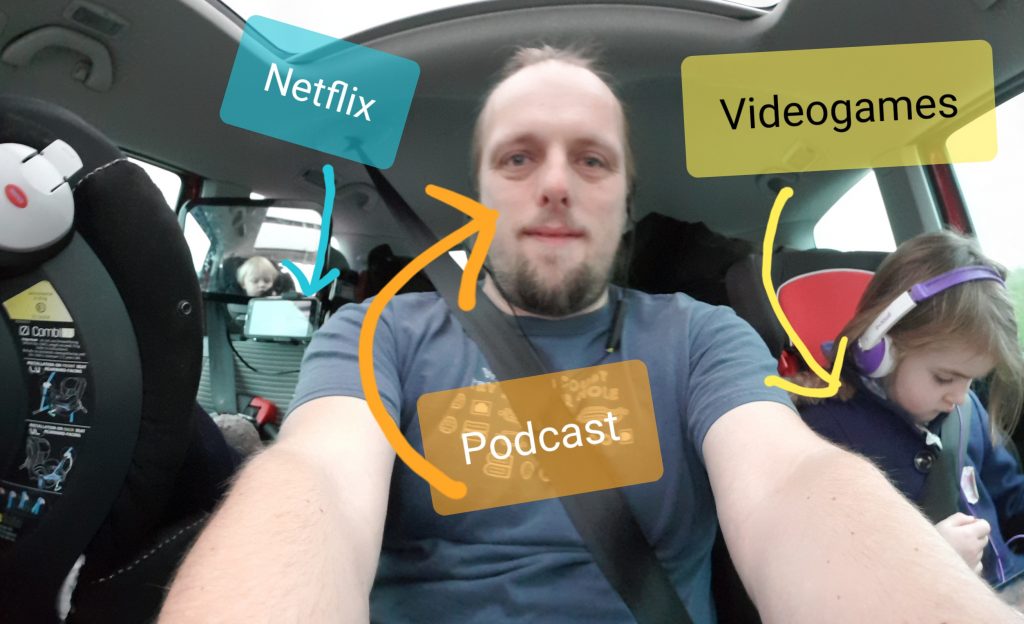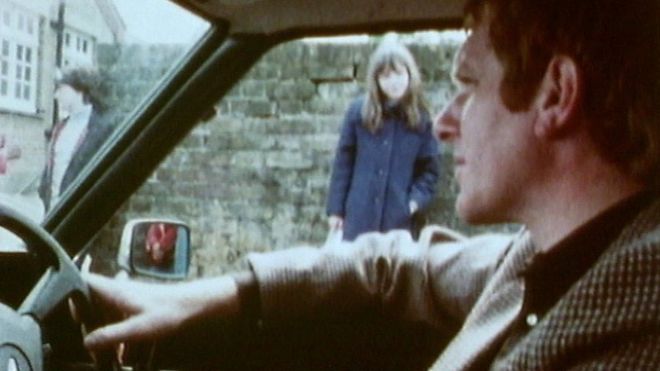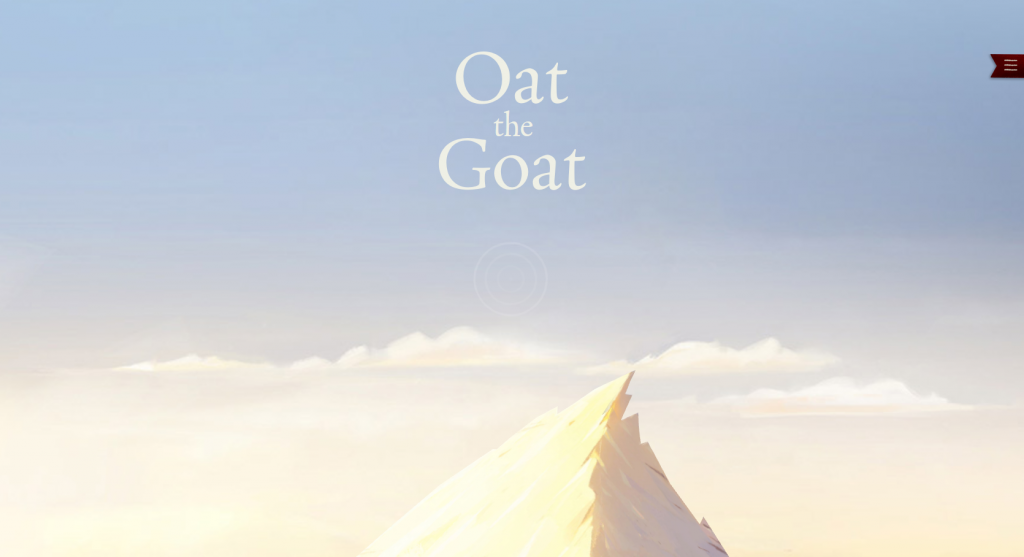How did our parents cope with just I-spy and 99 green bottles on -hour journeys? This is definitely the way to hypnotise kids in the car!
Tag: children
If your kid stops believing in Santa this year…
This article is a repost promoting content originally published elsewhere. See more things Dan's reposted.
**********************************
“In our family, we have a special way of transitioning the kids from receiving from Santa, to becoming a Santa. This way, the Santa construct is not a lie that gets discovered, but an unfolding series of good deeds and Christmas spirit.
When they are 6 or 7, whenever you see that dawning suspicion that Santa may not be a material being, that means the child is ready. I take them out “for coffee” at the local wherever. We get a booth, order our drinks, and the following pronouncement is made: “You sure have grown an awful lot this year. Not only are you taller, but I can see that your heart has grown, too. [ Point out 2-3 examples of empathetic behavior, consideration of people’s feelings, good deeds etc, the kid has done in the past year]. In fact, your heart has grown so much that I think you are ready to become a Santa Claus.You probably have noticed that most of the Santas you see are people dressed up like him. Some of your friends might have even told you that there is no Santa. A lot of children think that, because they aren’t ready to BE a Santa yet, but YOU ARE.
Tell me the best things about Santa. What does Santa get for all of his trouble? [lead the kid from “cookies” to the good feeling of having done something for someone else]. Well, now YOU are ready to do your first job as a Santa!” Make sure you maintain the proper conspiratorial tone.
We then have the child choose someone they know–a neighbor, usually. The child’s mission is to secretly, deviously, find out something that the person needs, and then provide it, wrap it, deliver it–and never reveal to the target where it came from. Being a Santa isn’t about getting credit, you see. It’s unselfish giving.
My oldest chose the “witch lady” on the corner. She really was horrible–had a fence around the house and would never let the kids go in and get a stray ball or Frisbee. She’d yell at them to play quieter, etc–a real pill. He noticed when we drove to school that she came out every morning to get her paper in bare feet, so he decided she needed slippers. So then he had to go spy and decide how big her feet were. He hid in the bushes one Saturday, and decided she was a medium. We went to Kmart and bought warm slippers. He wrapped them up, and tagged it “merry Christmas from Santa.” After dinner one evening, he slipped down to her house, and slid the package under her driveway gate. The next morning, we watched her waddle out to get the paper, pick up the present, and go inside. My son was all excited, and couldn’t wait to see what would happen next. The next morning, as we drove off, there she was, out getting her paper–wearing the slippers. He was ecstatic. I had to remind him that NO ONE could ever know what he did, or he wouldn’t be a Santa.
Over the years, he chose a good number of targets, always coming up with a unique present just for them. One year, he polished up his bike, put a new seat on it, and gave it to one of our friend’s daughters. These people were and are very poor. We did ask the dad if it was ok. The look on her face, when she saw the bike on the patio with a big bow on it, was almost as good as the look on my son’s face.
When it came time for Son #2 to join the ranks, my oldest came along, and helped with the induction speech. They are both excellent gifters, by the way, and never felt that they had been lied to–because they were let in on the Secret of Being a Santa.”
**********************************
First up: why do people post galleries of images of text to Imgur? At that point, you’re taking some information, making it take up more space, be readable by fewer people, be harder to translate, inaccessible to robots, and result in less-readable text. It drives me nuts. Anyway, I converted the original images (which you can find behind the link if you really want) into text, above, thereby improving the entire thing immeasurably.
That minor rage out of the way: I’m not a fan of telling children that Santa is “real” in the first place, but if you’re going to do that, the approach promoted by the author of the above might come a close second. I’ve always seen the concept of Santa as being the representation of the spirit of anonymous gift-giving, and I love it for that reason. Just like the Easter Bunny representing the spirit of hiding chocolate eggs for other people to find, this approach fosters honesty, maturity, and the joy of the season and doesn’t have to detract from the magic of Christmas.
Merry Christmas, everybody.
Poly Parents Evening
Our eldest, 4, started school this year and this week saw her first parents’ evening. This provided an opportunity for we, her parents, to “come out” to her teacher about our slightly-unconventional relationship structure. And everything was fine, which is nice.

I’m sure the first few months of every child’s school life are a time that’s interesting and full of change, but it’s been particularly fascinating to see the ways in which our young academic’s language has adapted to fit in with and be understood by her peers.
I first became aware of these changes, I think, when I overheard her describing me to one of her school friends as her “dad”: previously she’d always referred to me as her “Uncle Dan”. I asked her about it afterwards and she explained that I was like a dad, and that her friend didn’t have an “Uncle Dan” so she used words that her friend would know. I’m not sure whether I was prouder about the fact that she’d independently come to think of me as being like a bonus father figure, or the fact that she demonstrated such astute audience management.
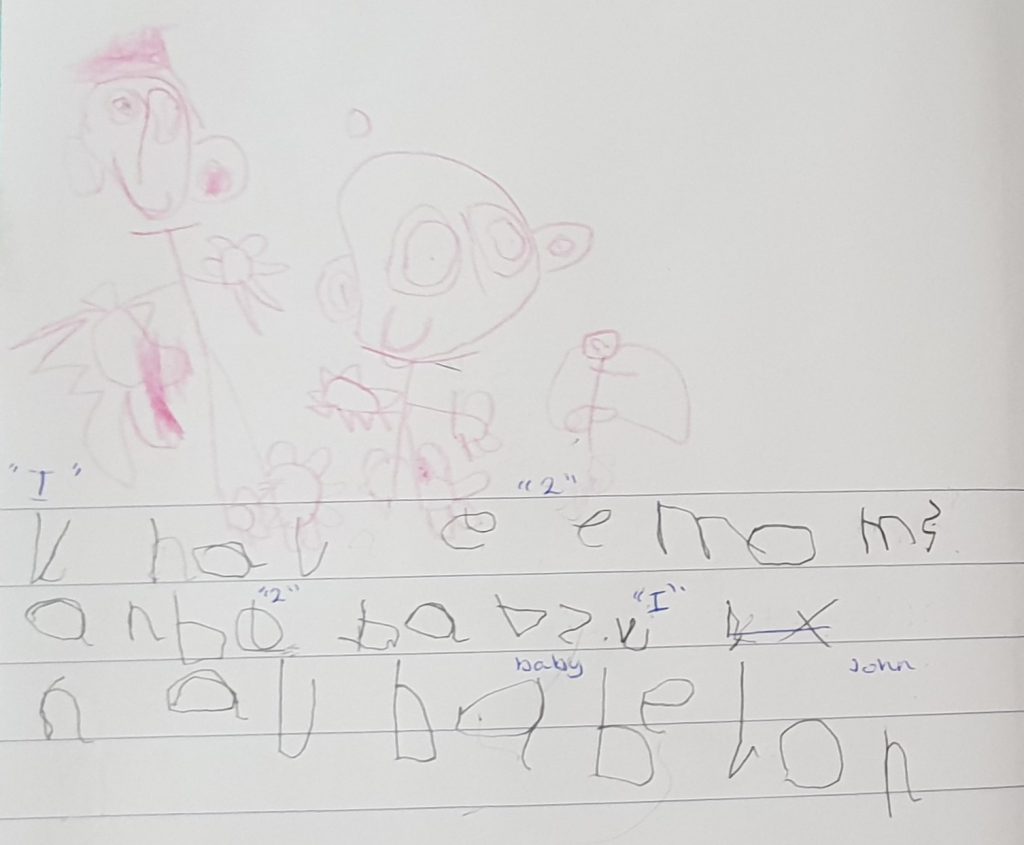
I don’t object to being assigned this (on-again, off-again, since then) nickname. My moniker of Uncle Dan came about as a combination of an effort to limit ambiguity (“wait… which dad?”) and an attempt not to tread on the toes of actual-father JTA: the kids themselves are welcome to call me pretty-much whatever they’re comfortable with. Indeed, they’d be carrying on a family tradition if they chose-for-themselves what to call me: Ruth and her brothers Robin and Owen address their father not by a paternal noun but by his first name, Tom, and this kids have followed suit by adopting “Grand-Tom” as their identifier for him.
Knowing that we were unusual, though, we’d taken the time to do some groundwork before our eldest started school. For example we shared a book about and spent a while talking about how families differ from one another: we figure that an understanding that families come in all kinds of shapes and sizes is a useful concept in general from a perspective of diversity and and acceptance. In fact, you can hear how this teaching pays-off in the language she uses to describe other aspects of the differences she sees in her friends and their families, too.
Still, it was a little bit of a surprise to find myself referred to as a “dad” after four years of “Uncle Dan”.
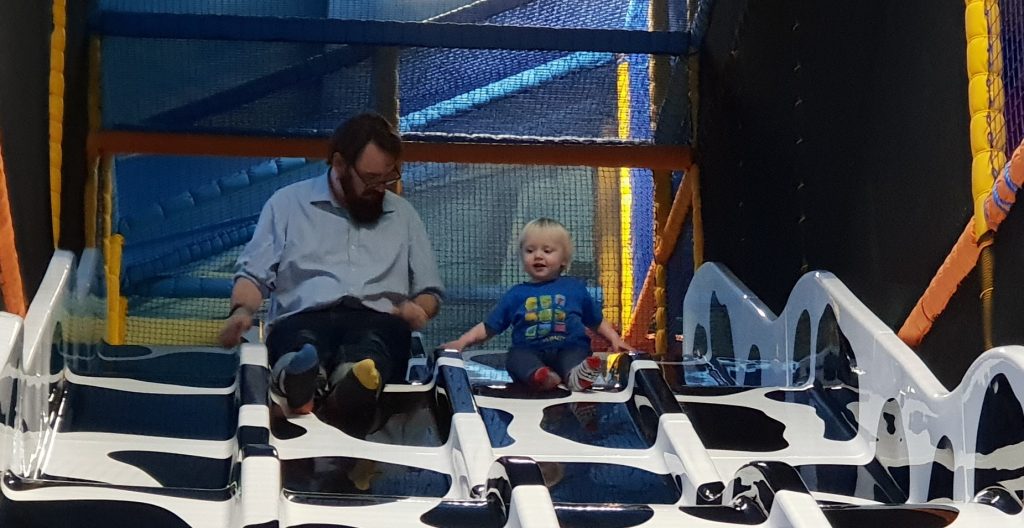
Nonetheless: in light of the fact that she’d clearly been talking about her family at school and might have caused her teacher some confusion, when all three of us “parents” turned up to parents’ evening we opted to introduce ourselves and our relationship. Which was all fine (as you’d hope: as I mentioned the other day, our unusual relationship structure is pretty boring, really), and the only awkwardness was in having to find an additional chair than the teacher had been expecting to use with which to sit at the table.
There’s sometimes a shortage of happy “we did a thing, and it went basically the same as it would for a family with monogamous parents” poly-family stories online, so I thought this one was worth sharing.
And better yet: apparently she’s doing admirably at school. So we all celebrated with an after-school trip to one of our favourite local soft play centres.

This teacher had to tell her deaf students that people can hear farts. Their reaction was hilarious.
This article is a repost promoting content originally published elsewhere. See more things Dan's reposted.
Anna Trupiano is a first-grade teacher at a school that serves deaf, hard-of-hearing, and hearing students from birth through eighth grade.
In addition to teaching the usual subjects, Trupiano is charged with helping her students thrive in a society that doesn’t do enough to cater to the needs of the hard-of-hearing.
Recently, Trupiano had to teach her students about a rather personal topic: passing gas in public.
A six-year-old child farted so loud in class that some of their classmates began to laugh. The child was surprised by their reaction because they didn’t know farts make a sound. This created a wonderful and funny teaching moment for Trupiano.
Trupiano shared the conversation on Facebook.
…
Stranger Danger: Still the right message for children?
This article is a repost promoting content originally published elsewhere. See more things Dan's reposted.
Many parents remember the “Stranger Danger” message given to children during the 1970s and 80s. Government videos warned children not to talk to people they didn’t know. But a new message is being trialled in the UK, which its creators think is better at keeping children safe.
“I tried to get the [old] Stranger Danger message across to my son a few years ago and it backfired badly,” says Suzie Morgan, a primary school teacher who lives in Fareham, Hampshire.
He got frightened and confused, couldn’t sleep at night and was worried somebody was breaking into the house.
Like any parent she wanted to keep her child safe.
But she felt the Stranger Danger message she was teaching – which she herself had grown up with – was unhealthy for her six-year-old son, making him too afraid of the world.
“I didn’t know where else to go,” she says.
So she was hopeful when her son’s school piloted a new safety message. It’s called Clever Never Goes and was devised by the charity Action Against Abduction.
It aims to make children less afraid of the world, by giving them the confidence to make decisions about their own personal safety.
Morgan says it has given her son more freedom and independence.
…
Linda Liukas, Hello Ruby and the magic of coding
This article is a repost promoting content originally published elsewhere. See more things Dan's reposted.
Linda Liukas’s best-selling Hello Ruby books teach children that computers are fun and coding can be a magical experience.
See the original article to watch a great video interview with Linda Liukas. Linda is the founder of Rails Girls and author of a number of books encouraging children to learn computer programming (which I’m hoping to show copies of to ours, when they’re a tiny bit older). I’ve mentioned before how important I feel an elementary understanding of programming concepts is to children.
Oat the Goat
This article is a repost promoting content originally published elsewhere. See more things Dan's reposted.
Oh my Goat! We just finished reading this awesome pick-a-path story that helps children learn the power of kindness. Have a go… #OatTheGoat
Discovered this fun interactive storybook; it tells the tale of a goat called Oat who endeavours to climb a mountain (making friends along the way). At a few points, it presents as a “choose your own adventure”-style book (although the forks are artificial and making the “wrong” choice immediately returns you the previous page), but it still does a reasonable job at looking at issues of bullying and diversity.
AC/DC’s littlest fan?
Bonky bonk bonk!
The Better Bundo Book
Today, I received my long-awaited copy of A Day in the Life of Marlon Bundo, a book inspired by the US Vice President’s family pet not to be confused with Marlin Bundo’s A Day in the Life of the Vice President, which it satirises. In case you’ve been living under a rock: the family of US Vice President Mike Pence have a pet rabbit called Marlon Bundo (and who doesn’t appreciate some punmanship in their pet’s name) and they wrote the latter book that attempts to explain, through the eyes of Marlon Bundo, what the Vice President does. And then John Oliver, who’s become a bit of a master of doing nice things in a dickish way, released the former a few hours earlier and subsequently thoroughly outsold the Pence book.

This self-proclaimed “better Bundo book” tells a different (educational and relevant) story: in it, Marlon Bundo falls in love with another boy rabbit but their desire to get married is hampered by the animals’ leader, the Stink Bug, who proclaims that “boy rabbits can’t marry boy rabbits; boy rabbits have to marry girl rabbits!” With the help of the other animals, the rabbits vote-out the Stink Bug, get married, and go on a lovely bunnymoon… a cheery and uplifting story and, of course, a distinctly trollish way to piss off the (clearly anti-LGBT) Mike Pence. This evening, I decided to offer it as a bedtime story to our little bookwork. At four years old, she’s of an age at which the highly-hetronormative narratives of the media to which she’s exposed might be only-just beginning to sink in, so I figured this was a perfect vehicle to talk about difference, diversity, and discrimination. Starting school later this year means that she’s getting closer to the point where she may go from realising that her family is somewhat unusually-shaped to discovering that some people might think that “unusual” means “wrong”, so this is also a possible step towards thinking about her own place in the world and what other people make of it.

Her initial verdict was that it was “sweet”, and that she was glad that the Stink Bug was vanquished and that Marlon and Wesley got to live together happily-ever-after. I explained that while the story was made-up, a lot of what it was talking about was something that really happens in this world: that some people think that boys should not marry boys and that girls should not marry girls, even if they love them, and that sometimes, if those people get to be In Charge then they can stop those people marrying who they love. I mentioned that in our country we were fortunate enough that boys can marry boys and girls can marry girls, if they want to, but that there are places where that’s not allowed (and there are even some people who think it shouldn’t be allowed here!). And then I asked her what she thought.
“They’re like the stinky Stink Bug.”
That’ll do.
Are You Ready to Have Friends with Kids?
This article is a repost promoting content originally published elsewhere. See more things Dan's reposted.
Once you have friends with kids, your life is no longer about you. It’s about your friends’ kids.
Having friends with kids is a huge responsibility. It’s not for everyone. Maybe you like swearing, and having a child in the room would cut into that. Maybe you have ambitions outside of liking Facebook pictures of wispy-haired toddlers in pumpkin patches. Maybe you’re terrified that your friends will ask you to hold the baby and you won’t know what to do with the head because its neck doesn’t work yet and you’re afraid you’ll kill it.
Many couples choose not to have friends with kids and find fulfilling friendships with like-minded couples who also value disposable income over propagating the human race. Before you decide if having friends with kids is right for you, it’s important to ask yourselves a few questions.
Having friends with kids is a huge responsibility. It’s not for everyone. Maybe you like swearing, and having a child in the room would cut into that. Maybe you have ambitions outside of liking Facebook pictures of wispy-haired toddlers in pumpkin patches. Maybe you’re terrified that your friends will ask you to hold the baby and you won’t know what to do with the head because its neck doesn’t work yet and you’re afraid you’ll kill it.
Many couples choose not to have friends with kids and find fulfilling friendships with like-minded couples who also value disposable income over propagating the human race. Before you decide if having friends with kids is right for you, it’s important to ask yourselves a few questions.
…
Games to Play With Your Child in Which You Barely Have to Move or Talk
This article is a repost promoting content originally published elsewhere. See more things Dan's reposted.
I see a lot of ideas online for things to do with your child, but most of them are a lot of work. Many of them involve an unnerving amount of craftiness and/or require going out to buy things. Almost all of them involve moving around which, many days, is fine, but some days can be pretty rough. N…
I see a lot of ideas online for things to do with your child, but most of them are a lot of work. Many of them involve an unnerving amount of craftiness and/or require going out to buy things. Almost all of them involve moving around which, many days, is fine, but some days can be pretty rough. Not that I don’t love getting down on the floor and playing with my kid (I love it a great deal) but I’m an adult in my mid-thirties. I can pretend to be a dinosaur for about 90 minutes (something I happily list on my professional resume) but after an hour and a half, all bets are off. And given that many days I’m home with my son for over eight hours, things can get a bit dicey.
I’ve taken the liberty of brainstorming some fun child/parent activities in which your child can be adventurous and creative and you can lie on the sofa reading a book. Here’s my list so far.
…
Review of Cygnet Nursery Kidlington Ltd
This review of Cygnet Nursery Kidlington Ltd originally appeared on Google Maps. See more reviews by Dan.
Loving, friendly staff provide a great environment for fun and development for babies through preschoolers. Failed an Ofsted inspection in 2016 but were swiftly able to act upon the report and make the necessary changes and have since gone from strength to strength (once this is out of recent memory, I’d upgrade my review to 5 stars).
Of particular credit to them is the diversity of play and learning activities they provide and their thorough feedback to parents on their children’s development.
Science! (for toddlers)
I’m not sure that there’s any age that’s too-young at which to try to cultivate an interest in science. Once a child’s old enough to ask why something is the case, every question poses an opportunity for an experiment! Sometimes a thought experiment is sufficient (“Uncle Dan: why do dogs not wear clothes?”) but other times provide the opportunity for some genuine hands-on experimentation (“Why do we put flowers in water?”). All you have to do is take every question and work out what you’d do if you didn’t know the answer either! A willingness to take any problem with a “let’s find out” mentality teaches children two important things: (a) that while grown-ups will generally know more than them, that nobody has all the answers, and (b) that you can use experiments to help find the answers to questions – even ones that have never been asked before!

Sometimes it takes a little more effort. Kids – like all of us, a lot of the time – can often be quite happy to simply accept the world as-it-is and not ask “why”. But because a fun and educational science activity is a good way to occupy a little one (and remember: all it needs to be science is to ask a question and then try to use evidence to answer it!), I’ve been keeping a list of possible future activities so that we’ve got a nice rainy-day list of things to try. And because we are, these days, in an increasingly-large circle of breeders, I thought I’d share some with you.

Here’s some of the activities we’ve been doing so far (or that I’ve got lined-up for future activities as and when they become appropriate):
-
Measuring and graphing rainfall
We’ve spent a lot of time lately taking about calendars, weather, and seasons, so I’m thinking this one’s coming soon. All we need is a container you can leave in the garden, a measuring jug, and some graph paper. -
Experimenting with non-Newtonian fluids
You can make a dilatant fluid with cornflower and water: it acts like a liquid, but you can slap it and grab it like a solid. Fine, very wet sand (quicksand!) demonstrates pseudoplasticity which also explains how paint ‘blobs’ on your brush but is easy to spread thin on the paper. -
Magnets
I’m really looking forward to the opportunity to play with magnets: we’ve started already with thanks to Brio wooden railway and talking about the fact that the rolling stock will attach one way around (and seem to jump together when they get close) but repel the other way around, and we’ve also begun looking at the fact that if you remove a carriage from the middle of a train the remaining segments are already correctly-aligned in order to be re-attached. -
Different kinds of bouncy balls
We’ve had fun before measuring how high different kinds of balls (air-filled rubber football, large solid rubber ball, skeletal rubber ball, small solid rubber ball) bounce when dropped from a stepladder onto a patio and talking about how ‘squishy’ they are relative to one another, and speculating as to the relationship between the two.

-
Demonstrating capillary action/siphoning
Two containers – one with a fluid in and one without – joined over the rim by a piece of paper towel will eventually reach an equilibrium of volume, first as a result of capillary action causing the fluid to climb the paper and then using a siphon effect to continually draw more over the edge. -
Illustrating the solar system (to scale)
It helps adults and children alike to comprehend the scale of the solar system if you draw it to scale. If you’ve got a long street nearby you can chalk it onto the pavement. If not, you’ll need a very small scale, but doing the Earth and Moon might suffice. -
Electricity
Batteries, wires, and LEDs are a moderately safe and simple start to understanding electricity. Taking a ‘dead’ battery from a drained toy and putting it into the circuit shows the eventual state of batteries. Connecting lights in series or parallel demonstrates in very simple terms resistance. Breaking or joining a circuit illustrates that switches function identically wherever they’re placed on the circuit. -
Vortices
I’m interested in trying to replicate this experiment into making different kinds of standing vortices in water, but I might have to wait until our little scientist has slightly more patience (and fine motor control!).

-
Centripetal force
We’ve been lucky enough to get to talk about this after using a whirlpool-shaped piece of marble run, but if we hadn’t then I was thinking we’d wait until the next time it was sunny enough for outdoor water play and use the fact that a full bucket can be spun around without spilling any in a similar way. -
Bug counting
Take a quadrant of garden and count the different kinds of things living in it. Multiply up to estimate the population across the garden, or measure different parts (lawn versus bedding plants versus patio, direct sunlight versus shade, exposed versus covered, etc.) to see which plants or animals prefer different conditions. -
Growing plants
Caring for different kinds of plants provides an introduction to botany, and there’s a lot to observe, from the way that plants grow and turn to face the light to the different stages of their growth and reproduction. Flowers give an attractive result at the end, but herbs and vegetables can be eaten! (Our little scientist is an enormous fan of grazing home-grown chives.) -
Mechanics and force
We’ve taken to occasionally getting bikes out of the shed, flipping them upside-down, and observing how changing the cogs that the chain runs over affects how hard you need to push the pedals to get movement… but also how much the movement input is multiplied into the movement of the wheel. We’re not quite at a point where we can reliably make predictions based on this observation, but we’re getting there! I’m thinking that we can follow-up this experiment by building simple catapults to see how levers act as a force multiplier.

-
Chromotography of inks
I’ve been waiting to do this until I get the chance to work out which felt tip pens are going to give us the most-exciting results… but maybe that’s an experiment we should do together, too! Colouring-in coffee filter papers and then letting them stand in a cup of water (assuming a water-soluable ink) should produce pretty results… and show the composition of the inks, too! -
Colour mixing
Mixing paint or play-doh is an easy way to demonstrate subtractive colour mixing. We got the chance to do some additive colour mixing using a colour disk spinner at a recent science fair event, but if we hadn’t I’d always had plans to build our own, like this one. -
Structure and form of life
Looking at the way that different plants and animals’ physical structure supports their activities makes for good hands-on or thought-driven experimentation. A day at the zoo gets a few steps more-educational for a preschooler when you start talking about what penguins are able to do as a result of the shape of their unusual wings and a walk in the park can be science’d-up by collecting the leaves of different trees and thinking about why they’re different to one another. -
Stabbing balloons
The classic magic trick of poking a skewer through a balloon… with petroleum jelly on the skewer… lends itself to some science, so it’s on my to-do list.

-
Surface tension
Water’s such a brilliant chemical because it’s commonplace, safe, and exhibits so many interesting phenomena. Surface tension can be demonstrated by ‘floating’ things like paperclips on top of the surface, and can be broken by the addition of soap. -
Astronomy
In the winter months when the sun sets before bedtime are a great time to show off stars, planets, satellites and the moon. Eyes or binoculars are plenty sufficient to get started. -
Life cycles
I was especially pleased when our nursery kept an incubator full of chicken eggs so that the children could watch them hatch and the chicks emerge. We’d looked at this process before at a farm, but it clearly had a big impact to see it again. Helping to collect eggs laid by my mother’s chickens helps to join-up the circle. Frogspawn and caterpillars provide a way to look at a very different kind of animal life. -
Putting baking soda into things
Different everyday kitchen liquids (water, vinegar, oil…) react differently to the addition of baking soda. This provides a very gentle introduction to chemistry and provides an excuse to talk about making and testing predictions: now that we’ve seen what cold water does, do you think that hot water will be the same or different?

-
Bubbles and foams
Blowing bubbles through different types of mesh (we just used different kinds of tea towels elastic-banded to the cut-off end of a plastic bottle) demonstrates how you can produce foams of different consistencies – from millions of tiny bubbles to fewer larger bubbles – because of the permeability of the fabric. And then we wrecked the last tea towel by adding food colouring to it so we could make coloured foams (“bubble snakes”). -
Phase transition
Start with ice and work out what makes it melt: does it melt faster in your hand or in a dish? Does it melt faster or slower if we break it up into smaller parts? If we ‘paint’ pictures on the patio with them, where does the water go? I’m also thinking about ways in which we can safely condense the steam (and capture the vapour) from the kettle onto e.g. a chilled surface. Once we’re at a point where a thermometer makes sense I was also considering replicating the experiment of measuring the temperature of melting snow: or perhaps even at that point trying to manipulate the triple point of water using e.g. salt. -
Dissection
Take apart the bits of a flower, or look in detail at the parts of a bone-in cut of meat, and try to understand what they’re all for and why they are the way they are. -
What floats?
Next time the paddling pool is out, I’d like to start a more-serious look at which things float and which things don’t any try to work out why. What might initially seem intuitive – dense (heavy-for-their-size) things sink – can be expanded by using plasticine to make a mixture of ‘sinking’ and ‘floating’ vessels and lead to further discovery. I’m also thinking we need to do the classic ‘raisins in a fizzy drink’ thing (raisins sink, but their rough surfaces trap the bubbles escaping from the now-unpressurised liquid, causing them to float back up to shed their bubbles).

So there’s my “now and next” list of science activities that we’ll be playing at over the coming months. I’m always open to more suggestions, though, so if you’re similarly trying to help shape an enquiring and analytical mind, let me know what you’ve been up to!
A Suitable Blog
At a little over 590 thousand words and spanning 1,349 pages, Vikram Seth’s A Suitable Boy is almost-certainly among the top ten longest single-volume English-language novels. It’s pretty fucking huge.
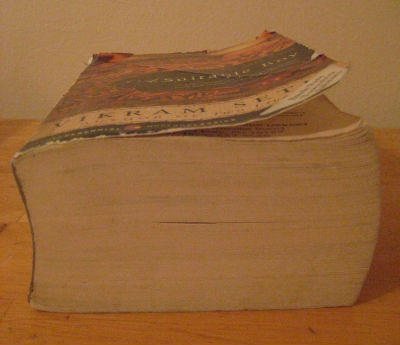
I only discovered A Suitable Boy this week (and haven’t read it – although there are some good reviews that give me an inclination to) when, on a whim, I decided to try to get a scale of how much I’d ever written on this blog and then decided I needed something tangible to use as a comparison. Because – give or take – that’s how much I’ve written here, too:

Of course, there’s some caveats that might make you feel that the total count should be lower:
- It might include a few pieces of non-content code, here and there. I tried to strip them out for the calculation, but I wasn’t entirely successful.
- It included some things which might be considered metadata, like image alt-text (on the other hand, sometimes I like to hide fun messages in my image alt-text, so perhaps they should be considered content).
On the other hand, there are a few reasons that it perhaps ought to be higher:
- It doesn’t include any of the content “lost” during the July 2004 server failure, some of which (like this post about Orange) were later recovered but many of which (like this post about Christmas plans and upcoming exams) remain damaged. It also doesn’t include any of the lost content from the original 1998/1999 version of this blog, only the weird angsty-teen out-of-context surviving bits.
- Post titles (which sometimes contain part of the content) and pages outside of blog posts are not included in the word count.
- I’ve removed all pictures for the purpose of the word count. Tempting though it was to make each worth a thousand words, that’d amount to about another one and a half million words, which seemed a little excessive.
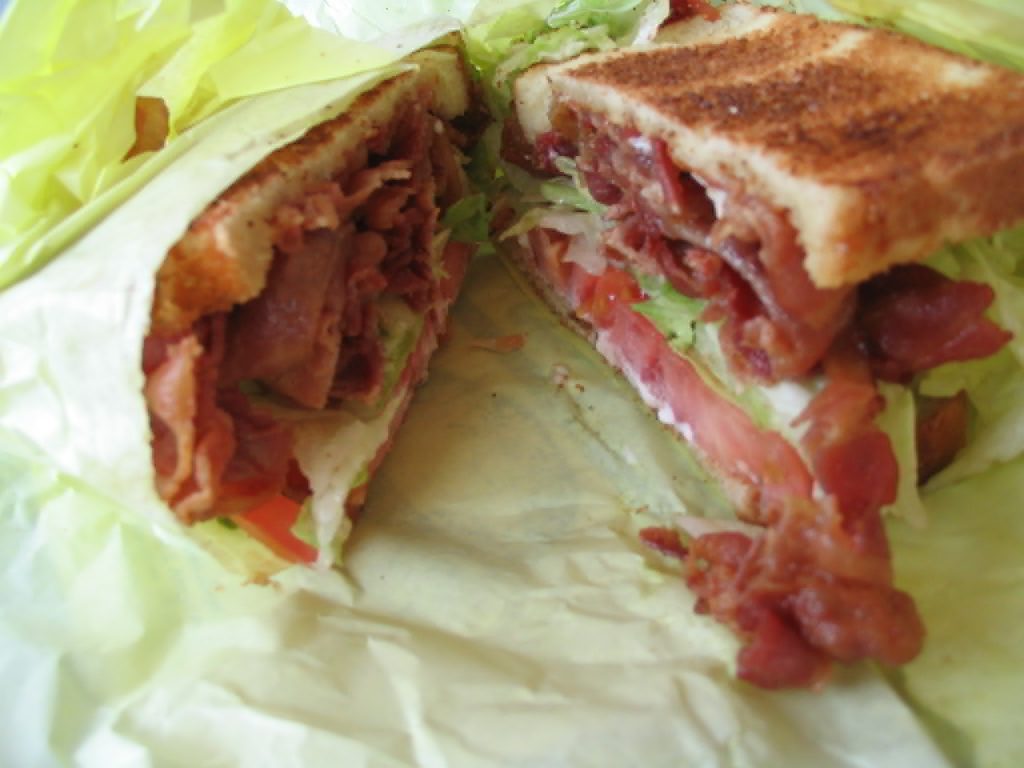
Of course, my blog doesn’t really have a plot like A Suitable Boy (might compare well to the even wordier Atlas Shrugged, though…): it’s a mixture of mostly autobiographical wittering interspersed with musings on technology and geekery and board games and magic and VR and stuff. I’m pretty sure that if I knew where my life would be now, 18 years ago (which is approximately when I first started blogging), I’d have, y’know, tried to tie it all together with an overarching theme and some character development or something.
Or perhaps throw in the odd plot twist or surprise: something with some drama to keep the reader occupied, rather than just using the web as a stream-of-conciousness diary of whatever it is I’m thinking about that week. I could mention, for example, that there’ll be another addition to our house later this year. You heard it here first (unless you already heard it from somewhere else first, in which case you heard it there first.)

Still: by the end of this post I’ll have hit a nice, easy-to-remember 594,000 words.
